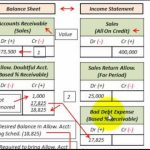Content

Inventory days will increase based on the inventory and economic or competitive factors such as a significant and sudden drop in sales. It’s essential for businesses to keep track of inventory days during each accounting period. Some companies may actively choose to keep higher levels of inventory – for example, if a significant increase in customer demand is expected. Another consideration is that some types of business will see seasonal fluctuations in demand for products, meaning that DIO may vary at different times of the year. Both ratios are important, as they provide insights into a company’s inventory management. Days Sales of Inventory is a more static measure, while inventory turnover is a more dynamic one.

Advisory services provided by Carbon Collective Investment LLC (“Carbon Collective”), an SEC-registered investment adviser. Days sales in inventory are computed within a period of one year but can be adjusted depending on what you need. DSI values can be used to show the efficiency of the company in terms of its operations. From the examples above, the DSI concept is very simple and computing it takes the shortest time possible so long as one can identify the required variables from the problem.
Days Sales in Inventory (DSI) – Definition, Formula and Benefits
Some companies in specific industries deliberately choose to keep their inventory levels high to satisfy an unexpected increase in customer demand. Moreover, the days in inventory numbers may vary at different times of the year in businesses easily affected by seasonal fluctuations in the market. Ratio is one of the most solid and reliable indicators a company has to analyze its efficiency in turning inventory into sales. Therefore, it is safe to say that the days in stock on hand are also a crucial metric in helping the company realize the exact time when to restock its inventory levels.
Basically, DSI is an inverse of inventory turnover over a given period. However, this number should be looked upon cautiously as it often lacks context. DSI tends to vary greatly among industries depending on various factors like product type and business model. Therefore, days sales in inventory formula it is important to compare the value among the same sector peer companies. Companies in the technology, automobile, and furniture sectors can afford to hold on to their inventories for long, but those in the business of perishable or fast-moving consumer goods cannot.
How to Interpret DSI Ratio (High or Low)
If your Days Sales of Inventory are higher than the Days Sales of Inventory for similar companies in your industry, it might be an indication that you need to improve your inventory management. Improving your inventory management can help you sell your inventory more quickly and free up cash that’s tied up in inventory. Generally speaking, a lower Days Sales of Inventory is better than a higher one, as it indicates that a company is selling its inventory more quickly. A company that’s selling its inventory faster can generate revenue more quickly, which is generally good for business. In other words shorter the inventory outstanding indicates the company has the potential to convert the inventory into cash within a short time. To understand the days in inventory formula one should look at the inventory turnover formula used in the denominator.

Days sales in inventory is also one of the measures used to determine the cash conversion cycle, which is the company’s average days to convert resources into cash flows. Once you know the inventory turnover ratio, you can use it to calculate the days in inventory. Days in inventory is the total number of days a company takes to sell its average inventory. It also determines the number of days for which the current average inventory will be sufficient. Companies use this metric to evaluate their efficiency in using their inventory.
What is Days’ Sales in Inventory?
How many days will it take for your company to sell its entire inventory? Well, if you have no idea, then you can calculate the Days Sales in Inventory, also known as Days Inventory Outstanding or just Days in Inventory. Cash conversion cycle, how effectively a business manages its inventory, and a brand’s cash flow. Yes, if a company ends up selling more goods than the inventory it has, the turnover can become negative. This can be common in the manufacturing industry where a customer might pay for a product before parts or materials are delivered.
What is days of sales in inventory?
Days sales in inventory (also known as inventory days on hand, days inventory outstanding, or days sales of inventory) refers to the average number of days it takes a retailer to convert a company's inventory into sold goods.
